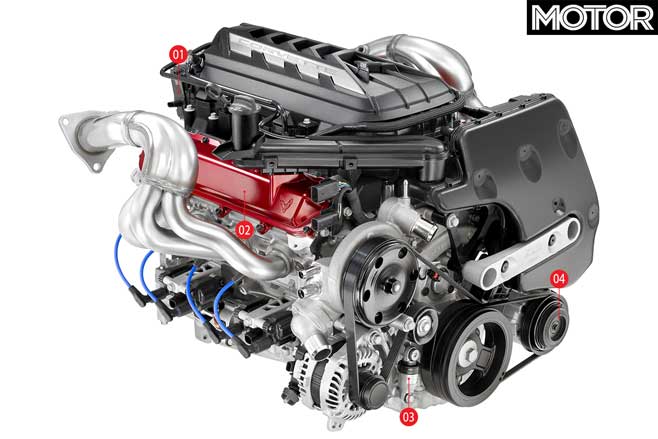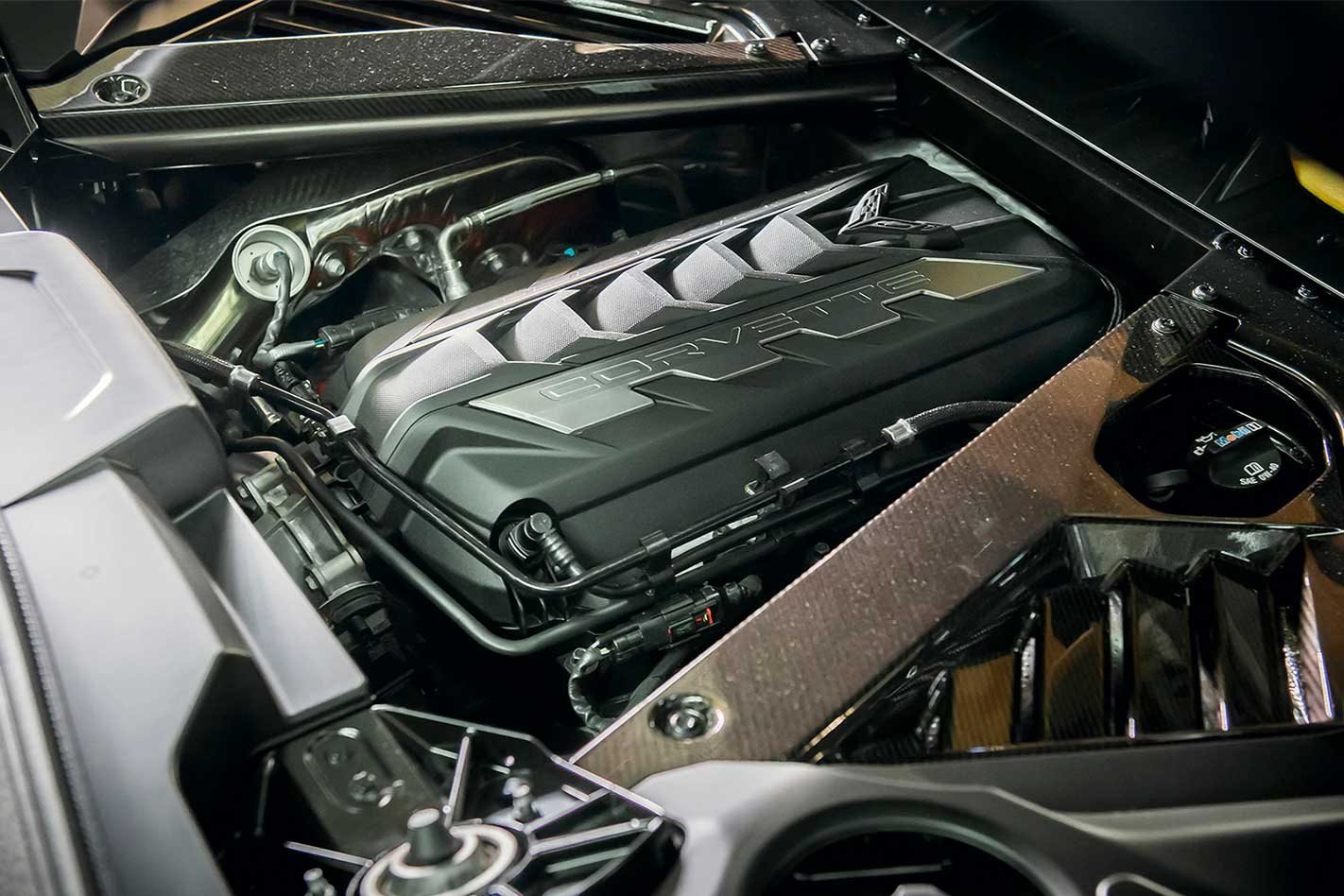COME 2020, Chevrolet will build the most significantly changed Corvette in history and place the engine behind the driver. Unlike its superseded front-engine layout, though, the atmo V8 engine at its core will walk a path of evolution rather than revolution.
Dubbed the LT2 and powering the base Stingray variant, the new engine evolves from the LT1 small-block V8 that debuted in the C7 Stingray and currently powers the Camaro 2SS. So that means its 103.3mm bore and 92.0mm stroke remain, its 6162cc capacity carries over, the compression ratio is still 11.5:1 and its valves span the same 54mm diameter on the intake side and 40.4mm for the exhausts. Even the throttle body stays 87mm.

But thanks to redesigned intake and exhaust packages (it is, after all, placed at the other end of the car), dry-sump oil lubrication and an upgraded camshaft, it will unleash 369kW at 6450rpm and 637Nm at 5150rpm when equipped with the optional exhaust as part of a Z51 package. That’s 34kW and 27Nm more than the original C7 Corvette, while delivering those respective peaks 750rpm and 550rpm later.
For reference against other great atmo short-blocks, it’s only 6kW and 3Nm shy of the fearsome 7.0-litre LS7 that lurked within the 2006 C6 Corvette Z06 and HSV W427. Yet the new LT2-equipped C8 almost matches it with 846cc less.
Chevrolet will not offer the car with a manual transmission; the LT2 will be mated to an eight-speed dual-clutch transaxle, another first for a road-going Corvette. We hope GM changes its stance in the near future.

So, where does the LT2 sit in the family? It belongs to GM’s fifth small-block generation, joining the current LT1, supercharged LT4 (which powers the current Camaro ZL1 and Corvette Z06) and supercharged LT5 (used in the Corvette ZR1). That means it also packs variable cam timing, direct injection and an upgraded rotating assembly design. It also comes with cylinder deactivation, a necessary evil to help it pass emissions.
It still has the 4.4-inch bore centre spacing and pushrod concept as the original Chevrolet small-block V8 from 1956. But before you call it outdated, last year’s Belle Isle IndyCar Grand Prix illustrated that the last thing the brand needs to reinvent is the small-block’s fundamental engine design.
That was when GM president Mark Reuss, who happens to be skilled behind the wheel, drove the pace car – a then-new Corvette ZR1 – straight into a wall during a caution period. With 563kW and 968Nm, the ZR1 made considerably more power than the race cars it was entrusted to slow down.
The Corvette’s LT2 in detail

01 – SUCK AND BLOW Engineers reversed the intake plenum so the throttle body lies at the tail end of the Corvette between the exhaust collectors. Those collectors now complete a four-one manifold exhaust runner design, as opposed to the C7’s four-two-one manifold.
02 – TESTA ROSSA New ancillary placement was also necessary to improve engine appearance. For instance, the side-mounted coil packs better show off the red-painted valve covers, and the exhaust manifold is now stainless steel, rather than cast.
03 – OIL TANKER Chevrolet says the C8’s dry-sump system was a must to combat its higher cornering loads. Three scavenge pumps save 7.09 litres of 0W40 (stored in this black tank) from pooling in a sump, also allowing the LT2 to sit 25mm lower in the car.
04 – SPIN CLASS An upgraded camshaft increases exhaust valve lift, but leaves the phasing of exhaust and intake timing relatively untouched. The valvetrain is also carryover, meaning the LT2 will rev to 6600rpm.






